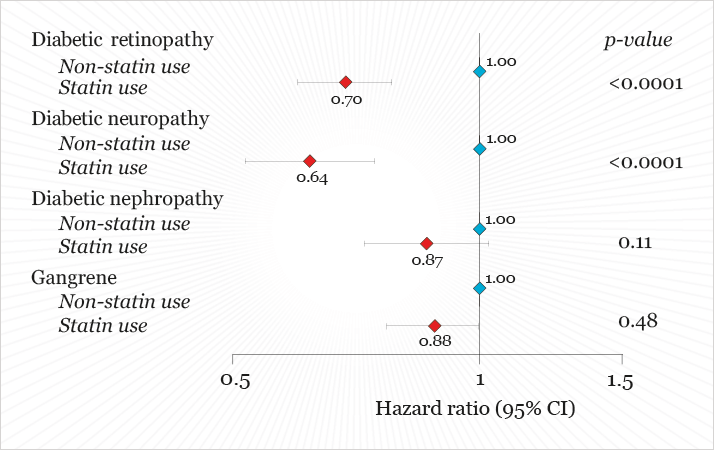
In cardiovascular disease, statins are a wonderful class of drugs. Many tens of millions of people receive them, and they prevent hundreds of thousands of vascular adverse events like myocardial infarction, stroke and cardiovascular death each year. A certain patient group – those with diabetes – benefit greatly from them to prevent just these events. But there is some doubt about it all being good news for diabetics. Hypothetically, statins may interfere with glucose metabolism, resulting in elevating levels of a highly reactive, micro- (and macro-) vasculature-damaging aldehyde, known as… glucose. Is there a new dark side to statins? Might they induce microvasculature disease like diabetic retinopathy?
Until recently, nobody was certain. Thanks to a study performed by two Copenhagen-based researchers, Sune Nielsen and Børge Nordestgaard, we’re beginning to understand the truth of the situation (1). Denmark has some impressively comprehensive healthcare records, and this enabled the pair to identify all patients in the country who were aged 40 years or older, and who were diagnosed with incident diabetes over the years between 1996 and 2009. At random, they selected 15,679 people who had been statin users until their time of diabetes diagnosis, and matched them in a 1:3 ratio with 47,037 people who hadn’t. They then determined the cumulative incidence of diabetic retinopathy, diabetic neuropathy, diabetic nephropathy and gangrene. Median follow-up was 2.7 years, and adjustments were made to account for certain biases between both populations – for example, there was a reason certain people were taking statins, and this made them more likely to visit a physician and obtain earlier diagnoses of diabetes than non-statin users.
So have statins been damaging the retinas of Danish patients with incident diabetes? The answer appears to be no – statin use conferred a highly significant, 30 percent reduction in the risk of diabetic retinopathy (Figure 1), and an even greater 34 percent reduction of diabetic neuropathy in general. Interestingly, there were no significant differences in the incidence of either diabetic nephropathy or gangrene between statin users and non-users. So, based on this evidence, it would appear that statins are likely to be protective against microvascular disease. How or why are yet to be determined.
References
- S.F. Nielsen, B.G. Nordestgaard, “Statin use before diabetes diagnosis and risk of microvascular disease: a nationwide nested matched study”, Lancet Diabetes. Endocrinol., Epub ahead of print (2014).
